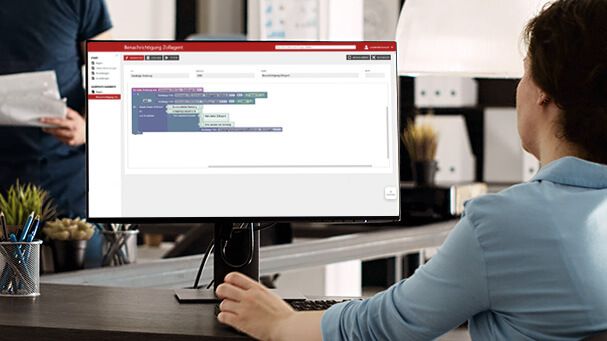What is the dream of every IT employee? All devices have the latest Windows updates installed and the latest client of the in-house software has been rolled out.
If companies use fat clients (desktop PCs or laptops), it is almost impossible to comply. Too quickly there are new updates that have to be installed manually on each fat client. With the right environment and appropriate thin clients, IT staff can perform this task across the board with just a few clicks.
Thin clients - or sometimes called slim clients - are usually small computers that use their resources via a network of servers. This means that the actual computing power is carried by these servers or virtual desktops and the thin client merely represents the result of the computing operations. Unlike fat clients, they cannot be used completely autonomously. A network connection is always necessary. Applications are installed once in the environment and the enabled workstations can access them. As a rule, the operating system on a thin client consists of a Linux kernel or a Windows installation (embedded), which is secured by a write filter. On the thin client itself, only a connection client is made available for the corresponding environment. There are many possibilities here, for example, the environment can be Citrix, VMware Horizon or Microsoft (RDS). The only thing to note here is that the corresponding thin client also supports the desired environment.
One of the biggest advantages is the easy handling of the units, because almost every manufacturer offers a management software for their units. This can be used to manage them or to install the latest firmware. In addition, the purchase and use of thin clients is considerably cheaper for companies than fat clients. On the one hand, the power consumption of a thin client is much lower than that of an ordinary desktop PC or laptop, and on the other hand, the devices are less susceptible to faults due to their simple construction. In most cases, thin clients do not have rotating fans that can break down. If you look at the lifespan of thin clients in comparison to a normal standard PC, the advantage clearly lies with the thin client. On average, its lifespan is seven years. A standard PC, on the other hand, lasts about three to four years.
The operation of a virtual environment, whether with terminal servers or individual desktops, also facilitates the maintenance of the IT infrastructure. Updates no longer have to be installed on each user PC, but only on the corresponding environment. No more uneven version statuses among users and much simpler troubleshooting are also worth mentioning here. If a new company location is added, only one step is necessary to open it: Connect the thin clients to the virtual environment.
The usual disadvantages are also being increasingly eradicated. Many manufacturers now offer mobile thin clients as laptop replacements. The argument that the weaker hardware makes it harder to work is refuted by innovations (graphics cards in virtualisation, redirection, etc.) and is no longer noticeable to the user. The biggest limitation, the limited choice of peripheral devices (e.g. printer, scanner, mouse, keyboard, drives), is being solved better and better by the manufacturers. More and more partnerships and cooperation are being established between the various suppliers. As a result, the driver supply for thin clients is getting better and better and more and more models also work with thin clients.
For the successful use of thin clients, companies must ensure that their servers have the necessary computing power - either through their own terminal environments or through high-performance terminal environments from IT service providers. Then a corresponding environment is set up to which the thin clients can connect. Once these requirements have been met, nothing stands in the way of their use.



